Black Spider Monkey is well known for its ability to hang from trees using its tail only. It is due to this unique ability which is called spider monkey. We have gathered a complete set of Black Spider Monkey Facts that will provide you with all the Black Spider Monkey Information you need. You are going to learn its scientific name, classification, appearance, size, lifespan, diet, food chain, habitat, location, adaptations, reproduction, male, female & baby black spider monkey, predators, endangerment, threats, population, and many other Black Spider Monkey Fun Facts.
Black Spider Monkey Facts
1. What Is A Black Spider Monkey
- The black spider monkey is a New World monkey and one of the seven species of the genus Ateles (spider monkeys).
- It is also known as red-faced spider monkey, red-faced black spider monkey, or the Guiana spider monkey.
- The rainforests of northern South America are the natural habitat range of the black spider monkey.
- It is one of the largest species of primates found in South America.
- It is an intelligent, noisy, and social creature.
- Black spider monkeys are facing the threats of habitat loss and hunting.
- The species is included in the list of Vulnerable Species on the IUCN Red List.
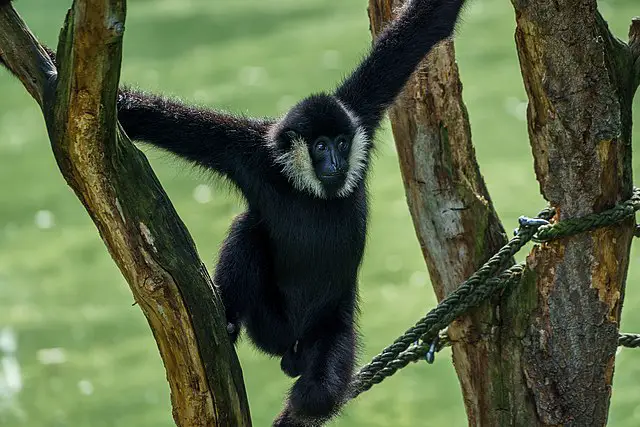
2. Black Spider Monkey Scientific Name
- The scientific name of the spider monkey is Ateles paniscus.
3. Black Spider Monkey Scientific Classification
- The following is the scientific classification or taxonomy of the spider monkey:
| Kingdom | Animalia |
| Phylum | Chordata |
| Sub-phylum | Vertebrata |
| Class | Mammalia |
| Order | Primates |
| Sub-order | Haplorhini |
| Infra-order | Simiiformes |
| Family | Atelidae |
| Genus | Ateles |
| Species | Ateles paniscus |
4. What Does A Black Spider Monkey Look Like
- Black spider monkeys have long, black hair on their bodies except for the face.
- They have pink or red-colored faces with only a few short white hair.
- They have small heads and long arms relative to their body size.
- Newborn babies have dark faces, which become lighter when they grow.
- They have an average head-body length of 22 inches (55.8 cm) and an average bodyweight of 17 pounds (7.7 kg).
- Spider monkeys have long, agile, and strong limbs.
- They have a prehensile tail, which they also used as an extra limb for locomotion.
- Because of its thin and strong limbs and strong, muscular, and prehensile tail, it looks like a spider when walking from tree to tree.
5. How Big Are Black Spider Monkeys – Black Spider Monkey Size
- The size range of black spider monkeys is from 14 to 26 inches.
- Male black spider monkeys have an average head to body length of 21.9 inches (55.7 cm) while females have 21.7 inches (55.2 cm).
- Males have an average bodyweight of around 20 pounds (9.1 kg) while females have 19 pounds (8.4 kg).
- They have 23 to 31 inches (60 to 80 cm) long tails.
6. How Long Do Black Spider Monkeys Live – Black Spider Monkey Lifespan
- The lifespan of black spider monkeys is up to 22 years in the wild.
- Their recorded oldest lifespan in the wild is 37.8 years.
- In captivity, they usually live for up to 33 years.
- They are known to live as long as 46 years in captivity.
7. What Do Black Spider Monkeys Eat – Black Spider Monkey Diet
- Black spider monkeys are omnivores in nature.
- They eat a wide variety of fruits as 90% part of their diet.
- They eat the soft and mature parts of the fruits and usually swallow the seeds.
- When fruits are not abundantly available, they also eat flowers, young leaves, aerial roots, nuts, honey, and occasionally decaying wood and tree breaks.
- Birds’ eggs, insects, spiders, and insect larvae also make a small composition of their diet.
- In captivity, they are fed with bananas, apples, oranges, raisins, carrots, celery, lettuce, wheat bread, monkey chow, and dog chow.
8. Black Spider Monkey Food Chain
- The following is the simplest food chain of black spider monkey:
Producers
- Plants are the producers in the food chain of black spider monkeys. All green plants get energy from the sun and prepare their food itself.
Primary consumers
- Black spider monkeys are the primary consumer. They consume fruits, green leaves, flowers, and tree bark.
Secondary consumers
- Predators of the black spider monkey-like cougar, jaguar, ocelot, raptors, and large snakes are the secondary consumers in this food chain.
- Humans also prey on black spider monkeys for food.
Decomposers
- When predators of the black spider monkeys die (as most of them are apex predators and have no natural predators), bacteria and fungi decompose their dead bodies and convert them into humus.
9. Where Do Black Spider Monkeys Live – Black Spider Monkey Habitat
- Black spider monkeys are found in eastern South America (north regions of the Amazon River) and Central America.
- Their habitat range covers regions in northern Brazil, Suriname, Venezuela, Guyana, and French Guiana.
- They inhabit healthy tropical rainforests, where they are found in the upper layers of the trees.

10. Black Spider Monkey Location
- The location of black spider monkeys in the tropical rainforests of eastern South and Central America.
- They are arboreal and live in the upper layers of the rainforest’s trees.
- They forage in the high canopy layer of the forests and prefer to live in healthy and undisturbed forests.
11. Black Spider Monkey Adaptations
- The overall body structure of black spider monkeys is well adapted for arboreal life. The following are the major adaptations:
Skull structure
- The skull of black spider monkeys has a small and round structure, in which the eyes are positioned in the forward direction. It allows them to correctly gauge distances when they are swinging from one tree to another.
Thin and long arms
- Black spider monkeys have thin, long, and strong arms, which are well adapted for climbing and swinging. They have no thumbs due to which they can strongly grip the tree branches and climbs easily.
Prehensile tail
- Black spider monkeys have a long, muscular, and prehensile tail with no hairs on the underside. It has a greater length than their whole body length. Their tail is well adapted for holding or grasping. They are capable of hanging down from a tree or branch only with their tail. Such a tail allows them an easy and fast movement between trees and branches.
Social behavior
- Black spider monkeys are extremely social and live in medium-sized groups. A large group has up to 30 individuals. The groups have several females, their young, and a few males. Blake spider monkeys also sleep at night like most other primates. Usually, their groups split up into small parties at night. They also forage in groups and communicate through various types of voices.
12. Black Spider Monkey Reproduction
- Black spider monkeys are placental mammals and the females give birth to completely developed youngsters.
- Female black spider monkeys reproduce every two to five years.
- During the breeding season, the mates attract each other through vocals and other behaviors.
- After mating, the females become pregnant and their gestation period lasts for 226 to 232 days.
- A single baby is born who completely depends on its mother for food and protection.
- The mother feeds the baby with her milk and rides it on her back when she is foraging or walking.
- The baby is weaned at the age of about two years, however, it stays near its mother for 4 to 5 years until it attains sexual maturity.
13. Male Black Spider Monkey
- Male black spider monkeys have an average body size of 21.9 inches (55.7 cm).
- They have a bodyweight of about 20 pounds (9.1 kg).
- Males and females eat the same diet and often live in large groups called bands.
- Males do not take part in raising the younger ones.
14. Female Black Spider Monkey
- Female black spider monkeys have an average body size of 21.7 inches (55.2 cm).
- They have a bodyweight of about 19 pounds (8.4 kg).
- Both males and females have the same habitat range and diet.
- Both sexes have only a small variation in size and appearance (sexual dimorphism).
- Females have total responsibility for raising babies.
15. Baby Black Spider Monkey
- A baby black spider monkey was born after a gestation period of 7 to 8 months.
- It completely depends on its mother for food, transport, and protection.
- A baby black spider monkey completely relies on its mother for around 10 weeks of its life, after which it starts to explore on its own and plays with its age fellows.
- Baby feeds with the mother’s milk for 20 to 24 months.
- It clings to the mother’s back when she is walking or foraging.
- A baby wraps its tail around its mother’s tail for security when riding on the mother’s back.
- Male baby black spider monkeys sexually mature at the age of around 56 months while females at the age of 51 months.
16. Black Spider Monkey Predators
- Major predators of the black spider monkeys are:
- Cougars
- Jaguars
- Pumas
- Ocelots
- Margay
- Raptors
- Large snakes
- Human beings also capture black spider monkeys for pet trade while native people of their habitat also hunt them for food.
17. Why Are Black Spider Monkey Endangered – Black Spider Monkey Endangered
- The black spider monkey is not an endangered species. It is included in the list of ‘Vulnerable’ species on the IUCN Red List.
- Loss of habitat is currently posing the greatest challenge to its survival.
18. Black Spider Monkey Threats
- There are many threats to the survival of the black spider monkeys. The primary ones are:
Loss of habitat
- Black spider monkeys continuously lose their habitat.
- Logging of long trees and deforestation for farming lands are the main factors of their habitat destruction.
- Deforestation greatly influences black spider monkeys as they live in the canopy region of long trees and also do not like to live in disturbed forests.
- In the past 45 years, their population is estimated to have decreased by 30% due to habitat loss and hunting.
Hunting
- Native people of the region hunt black spider monkeys for food because of their large size, which provides a large amount of food.
- For native people, it is easy to locate black spider monkeys because of their noisy nature and traveling in large groups.
- They are also caught for the pet trade.
- Diseases, predators, and climate change are other threats to their survival.
19. How Many Black Spider Monkeys Are Left In The World – Black Spider Monkey Population
- It is unknown how many black spider monkeys are left in the world.
- However, it is included in the ‘Vulnerable’ species on the IUCN Red List, which means its population is declining.
- It is estimated that their population has declined by 30% in 45 years.
- The species of a black spider monkey is protected in many regions across its range.
- In the Amazon, it is protected under the Amazon Animal Protection Act of 1973.

Black Spider Monkey Population 2018
- The 2018 population of black spider monkeys is unknown.
Black Spider Monkey Population 2019
- It is unknown what was the population of black spider monkeys in 2019.
20. Black Spider Monkey Fun Facts – Black Spider Monkey Interesting Facts
- In the animal kingdom, spider monkeys (including the black spider monkeys) have the strongest and most prehensile tails.
- The black spider monkey got its name due to its ability to hang solely with its tail just like a spider hanging through its silk. Also, when a black spider monkey moves from tree to tree and uses its tail as an extra limb, it looks like a spider.
- Black spider monkeys and their other primate relatives are an important part of the South American rainforest ecosystem. Their droppings have undigested seeds which disperse when they travel. So they play a vital role in the replenishing and sprouting of the vegetation in the rainforest.
- Black spider monkeys do not like to live in disturbed forests, and so their presence and thriving in a forest indicates the overall health of that forest.
- Black spider monkeys are excellent climbers and skilled in brachiating techniques (move from branch to branch by swinging through the arms). Their recorded highest leap from branch to branch (or tree to tree) is about 30 feet (9 meters).
- They make different types of sounds to communicate. When they feel threatened, they scream or make sobbing sounds or even barks to make the group members alert or call them for help.
- Black spider monkeys are social and live in groups called troops. A troop size depends on the food availability; the more abundant the food, the larger the troop size.
- Males members are dominant in a troop of black spider monkeys. However, they are the females who decide where to forage and what will be a troop size. We can say that spider monkeys are semi-matriarchal.

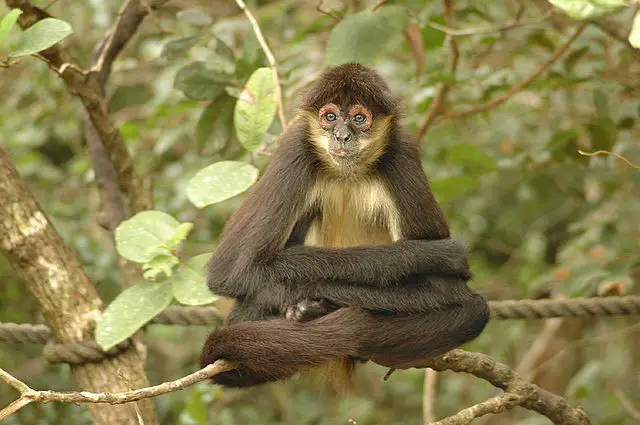

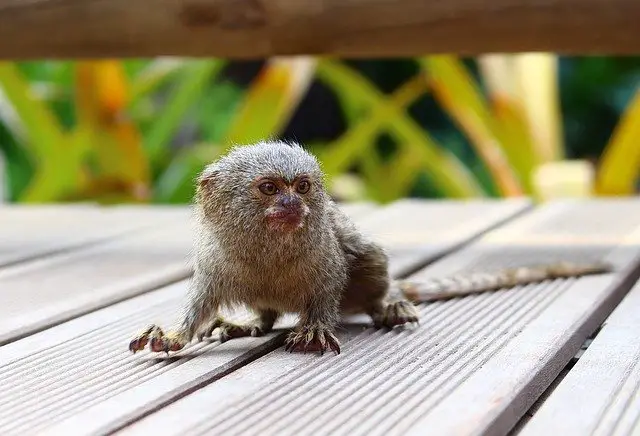
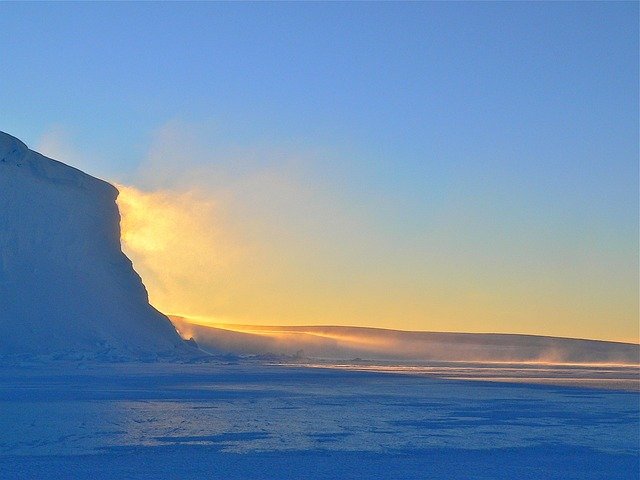


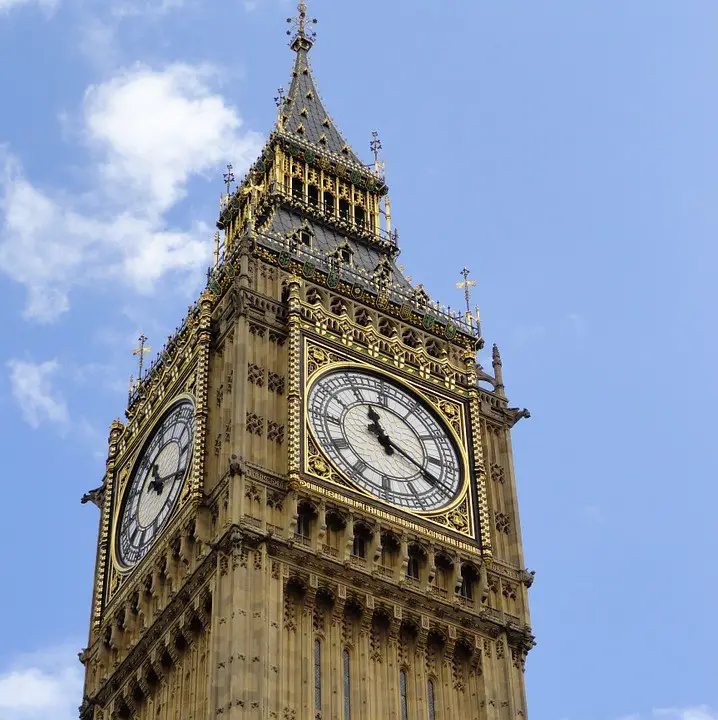

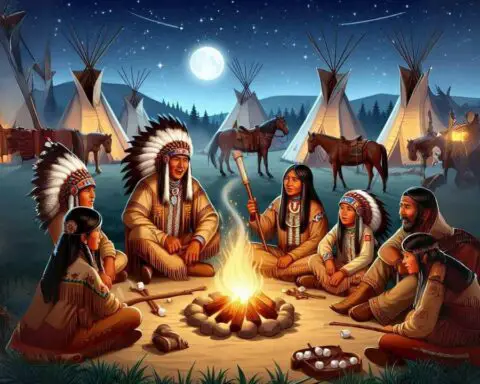




Love it so cool has lots of need-to-know info that i sorta already knew